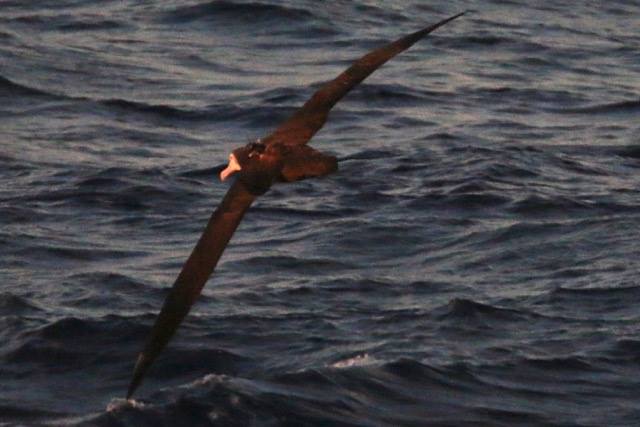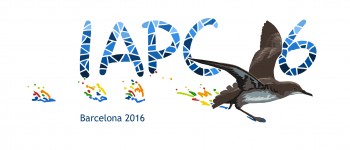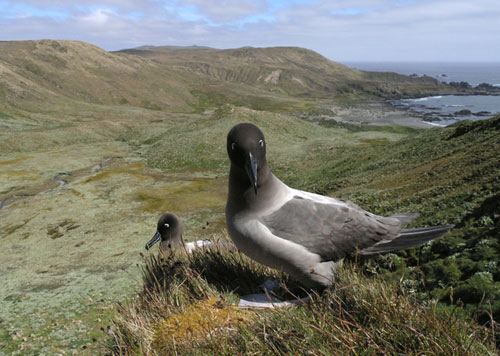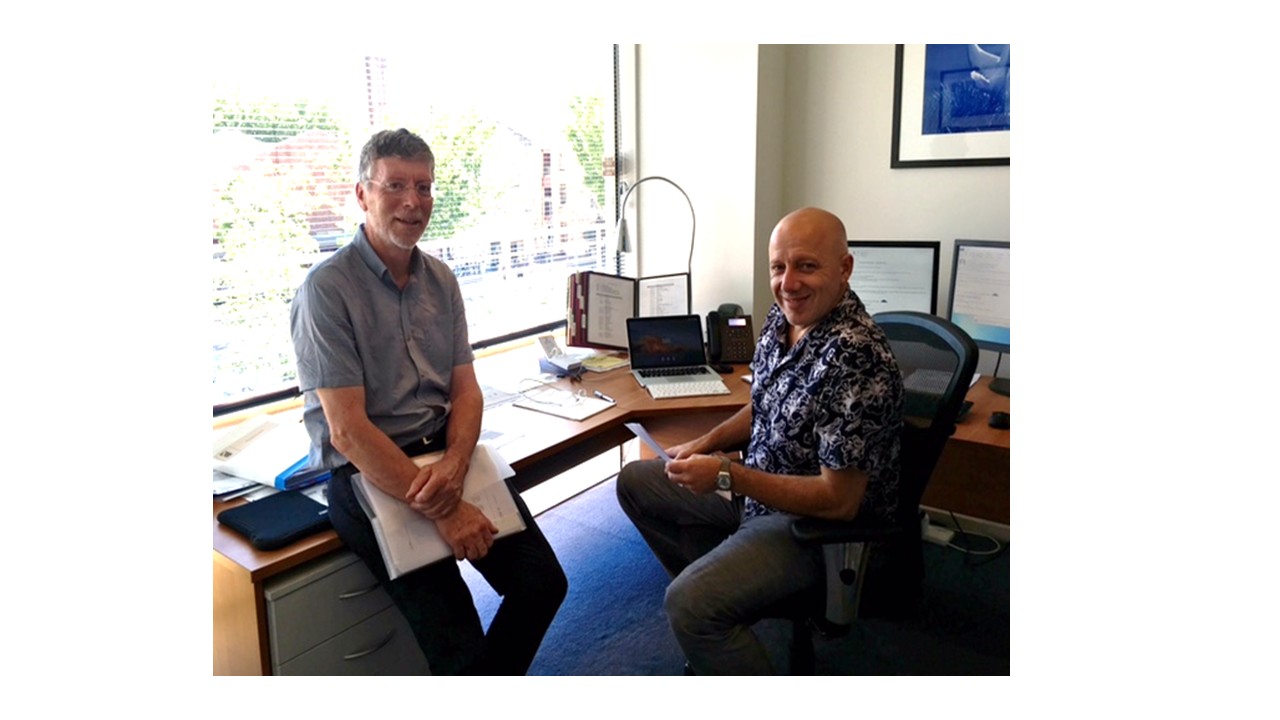The Pacific Seabird Group held its 43rd Annual Meeting at Turtle Bay, Oahu, Hawaii, USA last week. The meeting’s abstract book reveals that a number of presentations dealt with ACAP-listed species - listed below by authors and titles.
Subjects covered included translocations of Laysan Phoebastria immutabilis and Short-tailed P. albatrus Albatrosses, predation by House Mice Mus musculus on Midway’s albatrosses, fisheries bycatch and habitat restoration.
Valentina Colodro, Peter Hodum, Christian Lopez, Paola Gonzalez & Hannah Nevins: Restoring critical breeding habitat of the globally Vulnerable Pink-footed Shearwater (Ardenna creatopus)
Tomohiro Deguchi, Fumio Sato, Masaki Eda, Hiroe Izumi, Hajime Suzuki, Robert Suryan, Ellen Lance, Hasegawa Hiroshi & Kiyoaki Ozaki: Restoration of the Short-tailed Albatross colony in Ogasawara Islands using translocation and hand-rearing of chicks: short-term outcomes of post-release monitoring
Jane Dolliver, Robert Suryan, Christopher Noyles, Ellen Lance & Catherine Yeargan: Using satellite imagery to count nesting Short-tailed Albatross
Meg Duhr-Schultz, Ann Humphrey, Beth Flint, David Dow, Allie Hunter & Thierry Work: Invasive House Mouse predation on adult nesting albatrosses and subsequent nest abandonment and mortality on Sand Island, Midway Atoll National Wildlife Refuge
Nobuhiro Katsumata: Experiment to develop the mitigation measures of seabirds for small longline vessels in the western North Pacific
John Klavitter, Greg Schubert, Pete Leary, Scott Hall, Susan Schulmeister, Meg Duhr-Schultz, Dan Clark, Bret Wolfe, Ann Humphrey & Eric Moore: Invasive plant Verbesina encelioides management at Midway Atoll National Wildlife Refuge: advancing toward eradication
Edward Melvin, William Asher, Esteban Fernandez-Juricic & Amy Lim: Results of initial trials to determine if laser light can prevent seabird bycatch in North Pacific fisheries
Julio Hernandez-Montoya, Luciana, Luna Mendoza, Alfonso Aguirre-Munoz, Marıa de los Angeles, Milanes Salinas, Yuliana Bedolla-Guzman, Marıa Felix-Lizarraga, & Frederico Mendez-Sanchez: Laysan Albatross (Phoebastria immutabilis) on Guadalupe Island, Mexico: population status, distribution, and advances towards the eradication of feral cat
Daisuke Ochi, Nobuhiro Katsumata, Kei Okamoto & Hiroshi Minami: Evaluation of newly emerging seabird bycatch mitigation gears for tuna longline in the North Pacific
John Peschon: A summary of albatross band recovery data in the Hawaii deep and shallow set longline fisheries
John Peschon: A summary of seabird interactions in the Hawaii deep and shallow set longline fisheries in 2014
Stacy Vander Pol, Colleen Bryan, Rebecca Greenberg, Yung Wa Sin & Scott Edwards: Mercury as a proxy for genetics analysis in albatross (Phoebastria spp.) eggs from Midway Atoll
Matthew Saunter, Naomi Worcester & Cynthia Vanderlip: Habitat restoration at Kure Atoll Wildlife Sanctuary
Eric VanderWerf, Robby Kohley, Lindsay Young, Tom Savre, Jared Underwood & Joe Schwager: Translocation of Laysan Albatrosses from the Pacific Missile Range Facility on Kauai to James Campbell National Wildlife Refuge on Oahu.

Short-tailed Albatross on Midway Atoll, photograph by Pete Leary
The meeting also heard of studies on other species of procellariiform seabirds, including Hawaiian Petrel Pterodroma sandvicensis and Newell’s Shearwater Puffinus newellii, both endemic to the Hawaiian Islands.
Albatross researcher and conservationist Lindsay Young, a previous ACAP News Correspondent, received a Special Achievement Award from the Pacific Seabird Group at is 2016 meeting.
Reference:
Bachman.D., Starr, M.& Karnovsky, N. 2016. Pacific Seabird Group 2016 43rd Annual Meeting, O’ahu, Hawai’i Abstract Book. 178 pp.
John Cooper, ACAP Information Officer, 17 February 2016




 English
English  Français
Français  Español
Español 



